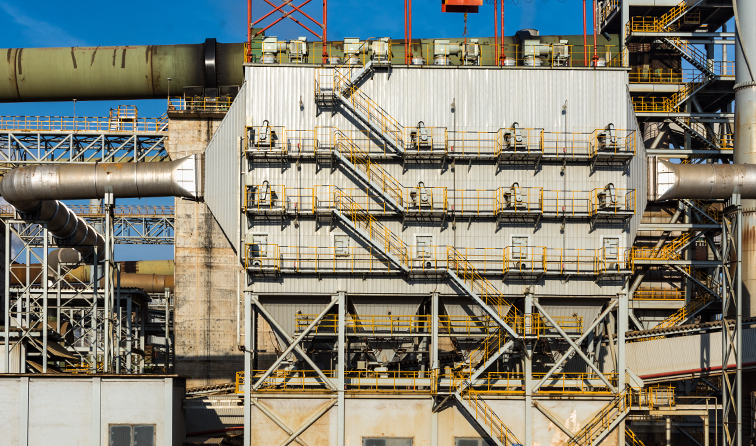GENERAL
There is an increasing demand for particulate emissions removal from large industrial processes, especially for applications involving power generation, cement manufacturing, paper and pulp, alumina generation and other smelting processes. Electrostatic Precipitators (also referred to as ESP) technology has always been the most appropriate technology solution for not only energy efficiencies, but also cost effective cleaning for particulate emissions.



TECH BRIEF
When using ESPs (in contrast to Fabric Filters, mechanical collectors or scrubber technologies) suspended dust particulates in the off-gas stream are electrically charged via the assistance of discharge electrodes.
They then migrate under the influence of a strong electric field towards the collector electrodes/plates, where they are deposited. The introduction of the Flue Gas Conditioning System improves ESP collecting efficiency through the cooling of the gas stream, whilst also reducing dust resistivity.

BENEFITS
A variation to the dry ESP are the wet/acid mist electrostatic precipitators (MESP/WESP). Due to the increasing demand of mineral processing for the treatment of harsh corrosive off-gas streams, MESP are more suitable for this application than their dry counterpart. MESP in particular can be found for the:
- Cleaning of SO2 (Sulfur Dioxide) laden gases found in Sulfuric Acid production or other calcination
processes eg. Lithium Hydroxide (LiOH) - Cleaning of waste gas from Calcination process such as Titanium Oxide (TiO2)
- Cleaning of flue gases caused by hazardous waste incineration
- Cleaning of waste gases from chemical processes, which are humid and heavily saturated
The team at MAIRSTech has years of experience working on other ESPs such as ABB, FlaktWoods, Joy Western, Lurgi and FLS. Contact us, your leading industry specialists, for advice on system improvements and upgrades, and for all your spare parts needs.
